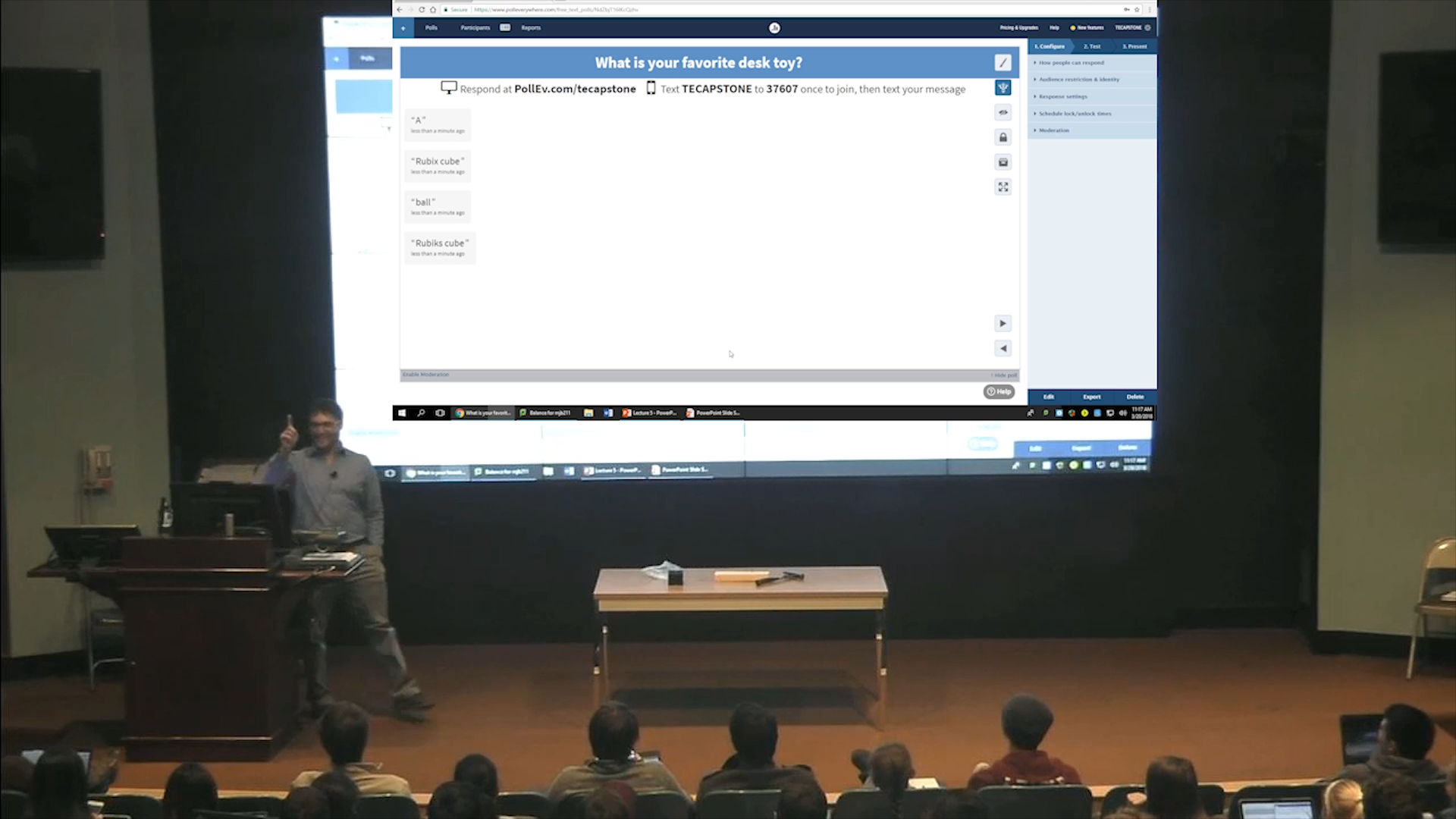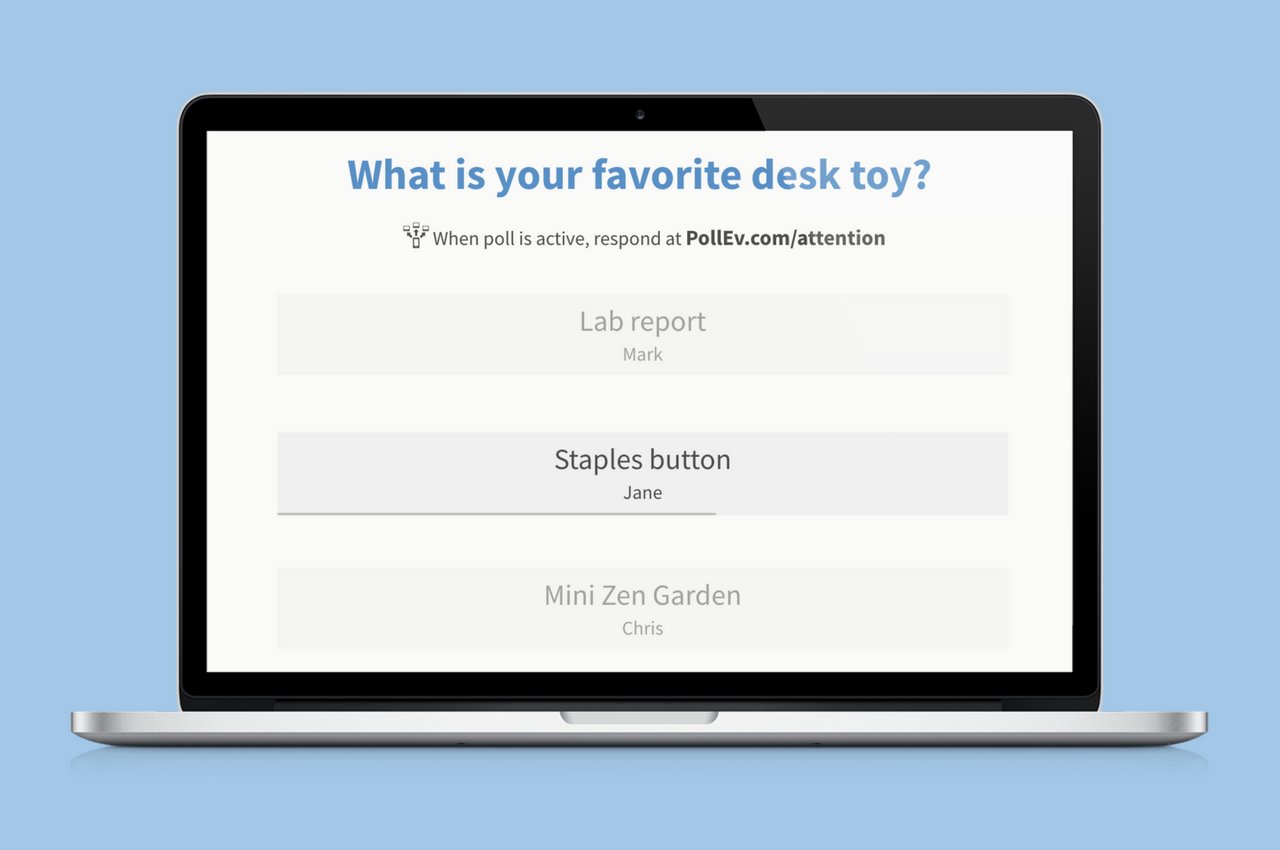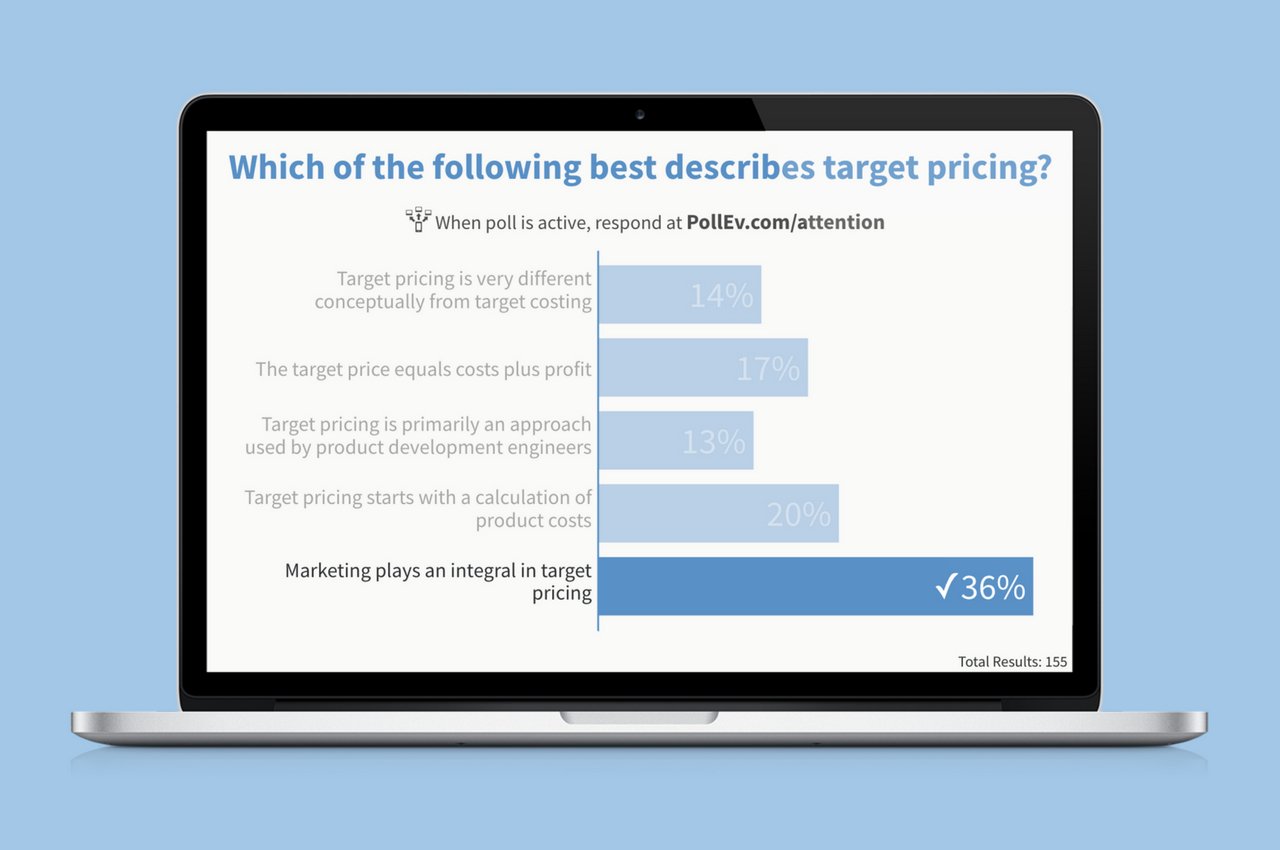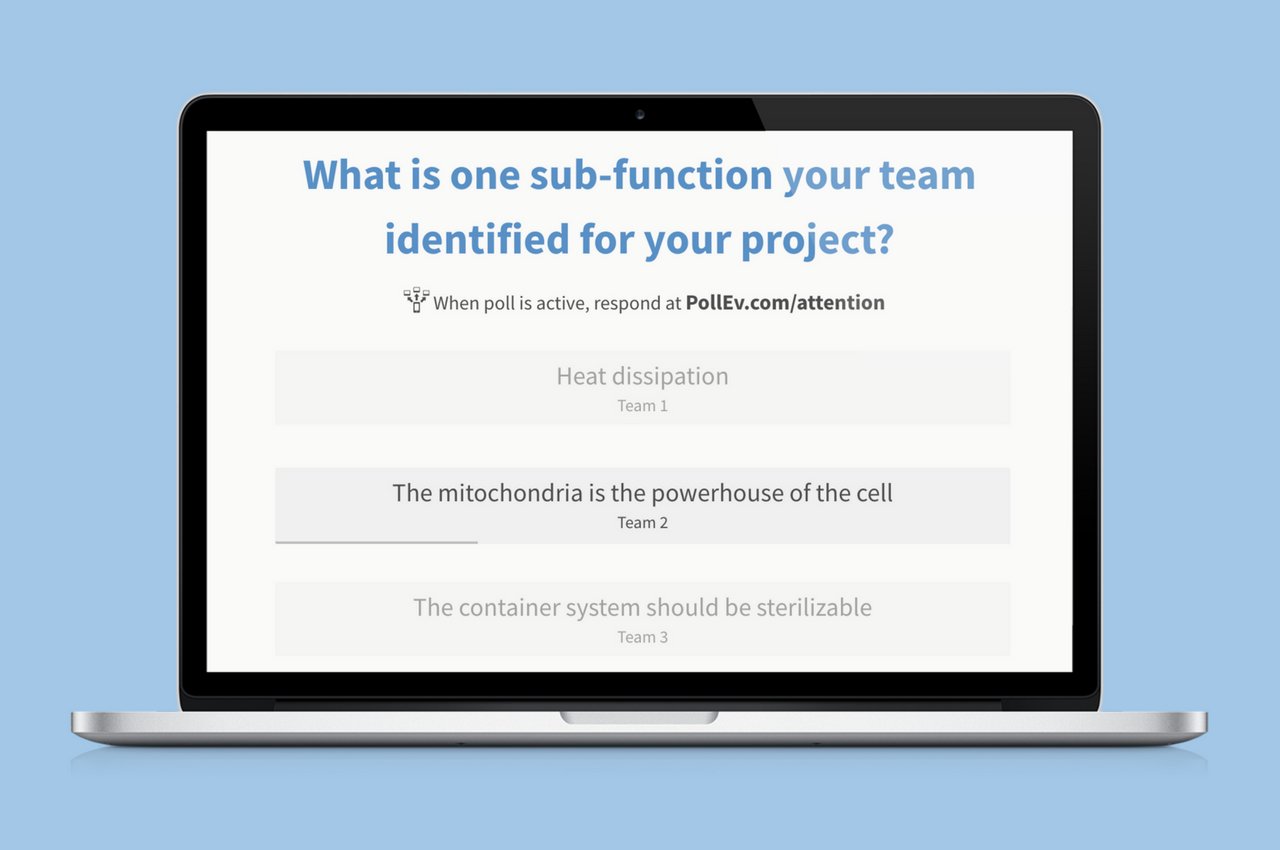Managing student attention with TED Talks and live polling

Higher education is going through a 21st century transformation. During the past twenty years, institutions have struggled to adjust to the integration of technology into their daily lives. Today’s educators are battling an ever-increasing number of distractors for their student’s attention.
The transition from Millennial to Generation Z students, and the introduction of smartphones into the classroom, are dramatically changing the way institutions operate.
I have spent the past 10 years at Lehigh University. First as a undergraduate, then matriculating through master’s, PhD, and finally a post-doctoral research associate and faculty member. My time has coincided with the explosion of smartphones; from my first Motorola Droid during my sophomore year, to nearly every student in my 200-person class being glued to their devices. This has given me the unique perspective of observing (and experiencing) the growing trend of distraction.
Now that I am teaching the class, I ask: How can I encourage my students to pay attention?
How do you win the fight for student attention?
During my first semester teaching the Technical Entrepreneurship (TE) Capstone Course to 200 students, I observed firsthand how distracted the students were from the instructor’s perspective. This led me to perform a preliminary investigation into measuring student engagement using recordings of the lecture.
My findings showed that only Active-Collaborative Learning (ACL) had a significant impact on student engagement. Regular lecture, and even random calling, saw little to no engagement, at least in large lecture classes.
“I encourage instructors in all courses to give a simple poll a try and … check out the myriad of other interactive tools they offer to help build a more interactive, engaged classroom.”
Based on this data, I decided to change my lecture format to minimizing the time spent presenting rote material. Rather, I had guest presenters give short, 15-20 minute TED-style talks on their areas of expertise. While my study provided evidence that there is a need for change, I still needed an assessment tool to quantify student performance as I transitioned into this new teaching style.
This is where Poll Everywhere came in. Keeping track of 200 students, on 31 teams, for 21 different corporate sponsors is demanding from an administrative perspective. Over the past four years, I have worked to streamline tasks using technology. With my change in course format, I also wanted a way for students to answer survey questions during class to ensure they were paying attention. This seemed like an excellent opportunity for a text message-based polling system as well.

Poll Everywhere captures attention at scale
Lehigh had a subscription to another solution. But after a little research, I learned that the system could only accommodate 150 users and required an app to use. Both were deal-breakers.
Further searching brought me to Poll Everywhere. Their comparison spreadsheet detailed all of their features along with those of their competitors. Maximum of 400 users, check. Text message and online responses, check. Couple that with a gradebook reporting system that would give me individual user feedback, and I knew that this was my solution. I purchased their individual instructor plan and was off.
“I was impressed by how Poll Everywhere made it simple to have student ideas published in real time on the projector behind me, which served as the basis for the ensuing discussion.”
Setting the system up was extremely straightforward thanks to some documentation and example slides. I did a no-credit trial during the second lecture, which went as smoothly as anything deployed to 200 people at once could.
One issue I experienced was with students who had previously enrolled their phone number to another class using their non-Lehigh issued email address. When I setup the class, I uploaded all of the student phone numbers, names, and corresponding university email addresses using the bulk-enrollment system. The conflicting emails for students previously enrolled in Poll Everywhere was not a large issue but something that had to be noted when correlating the grade reports to our course grade sheet.
Ideas for using Poll Everywhere in the classroom
Until last spring, when we first implemented Poll Everywhere, attendance was still done by hand. Students signed in on paper cards that were later entered by the course Teaching Assistant. This led to lots of paperwork and issues in academic integrity where students would sign in for each other (we know you are doing this even if you use different color pens).
I knew I wanted a way to allow students to respond to questions to track their attendance. At the beginning of each lecture I presented a fun poll that captured attendance and also logged students into Poll Everywhere for the class.

Returning to my goal of assessing students, I implemented a format where students would be asked a multiple choice question that evaluated their understanding of the topic after each presenter. These, along with attendance, were integrated into my course syllabus as a portion of their individual contribution grade. Since it was my first time trying this in the course, I was lenient on how many correct answers constituted full credit – but the system worked quite well. Going forward, I would encourage that it be treated as any other quiz.

I sought to make my courses more interactive to encourage student engagement. This led me to try the open-ended response poll during lectures when I wanted to encourage brainstorming across the class. I was impressed by how the tool made it simple to have student ideas published in real time on the projector behind me, which served as the basis for the ensuing discussion.

In conclusion, my initial goal was to take attendance and assess if students were paying attention during the lectures. Taking attendance was extremely successful and decreased our workload significantly. I also, anecdotally, noticed that the lecture hall was fuller than previous years (despite having mandatory attendance every year). I believe this to be a result of the direct accountability created by Poll Everywhere.
While more formal study is needed to evaluate the impact on student engagement and retention of information, the Poll Everywhere quizzes after talks did provide me with direct, authentic, and formative assessment of the student’s knowledge in the areas being discussed. This data can be used by our departments in the upcoming accreditation cycle which is immensely beneficial. By these metrics, our implementation was a success and something I would recommend continuing.
After spending one semester in one course working with Poll Everywhere I am left with countless ideas for how my colleagues and I can use these technologies in the courses all across the university. I encourage instructors in all courses to give a simple poll a try and, once you are inevitably addicted, check out the myriad of other interactive tools they offer to help build a more interactive, and ultimately engaged, classroom.